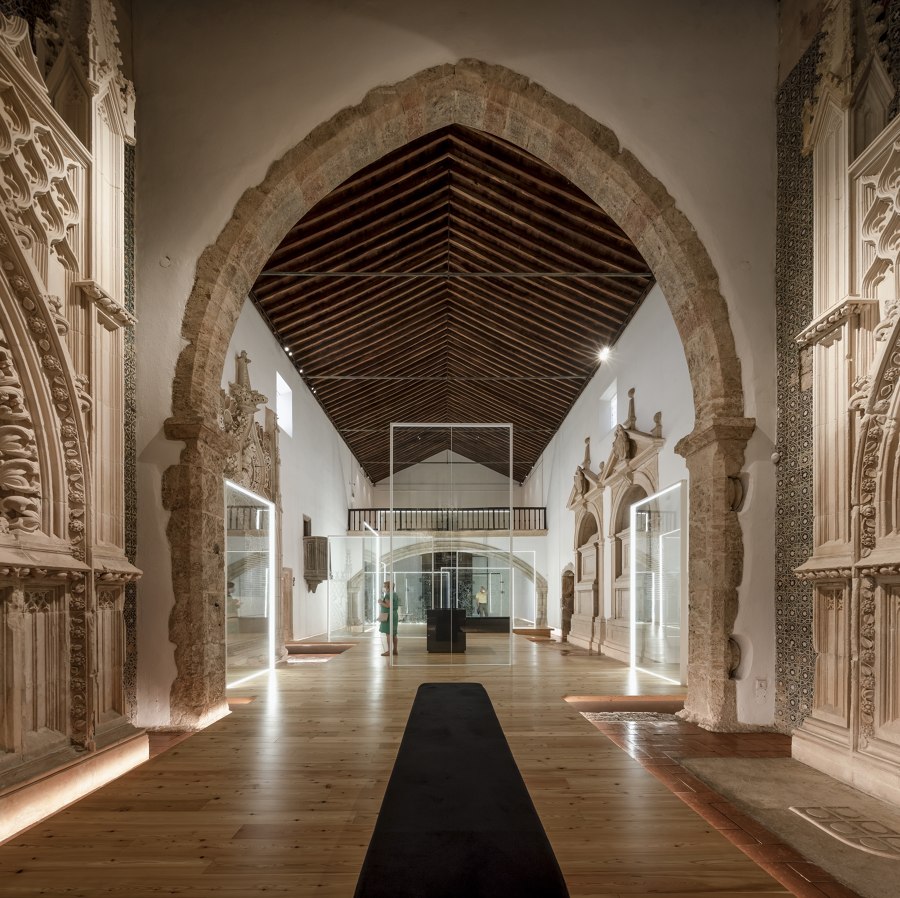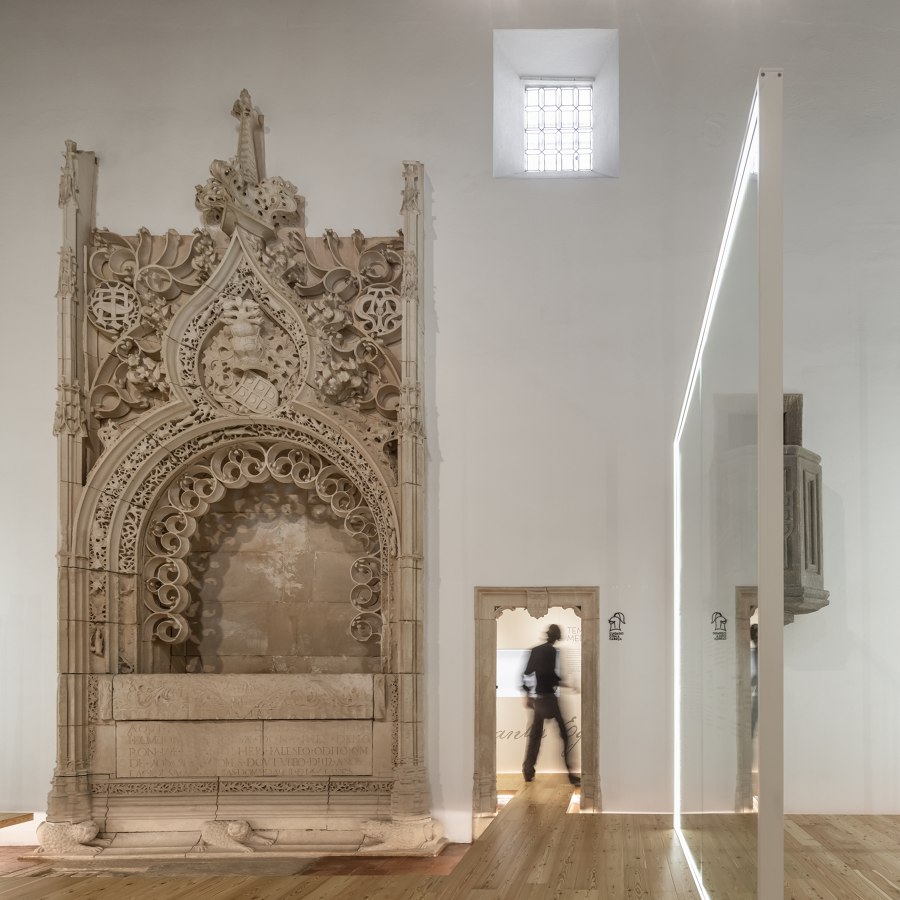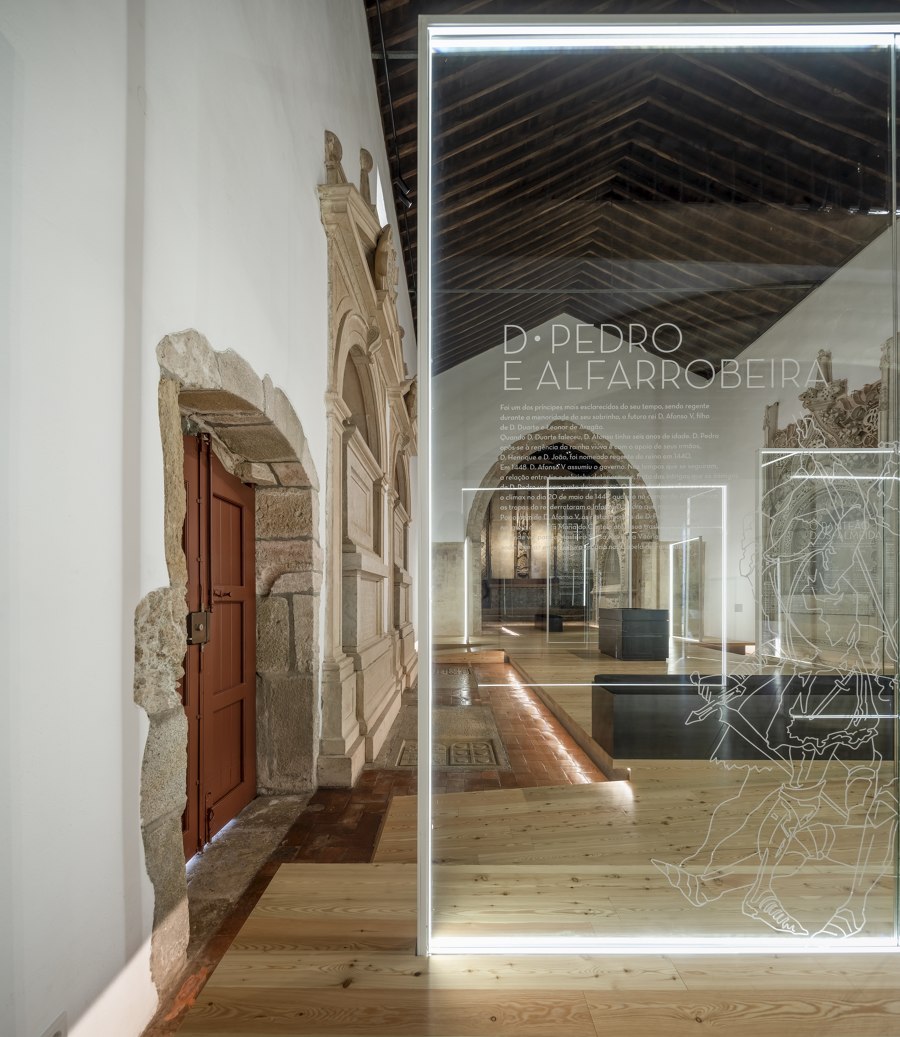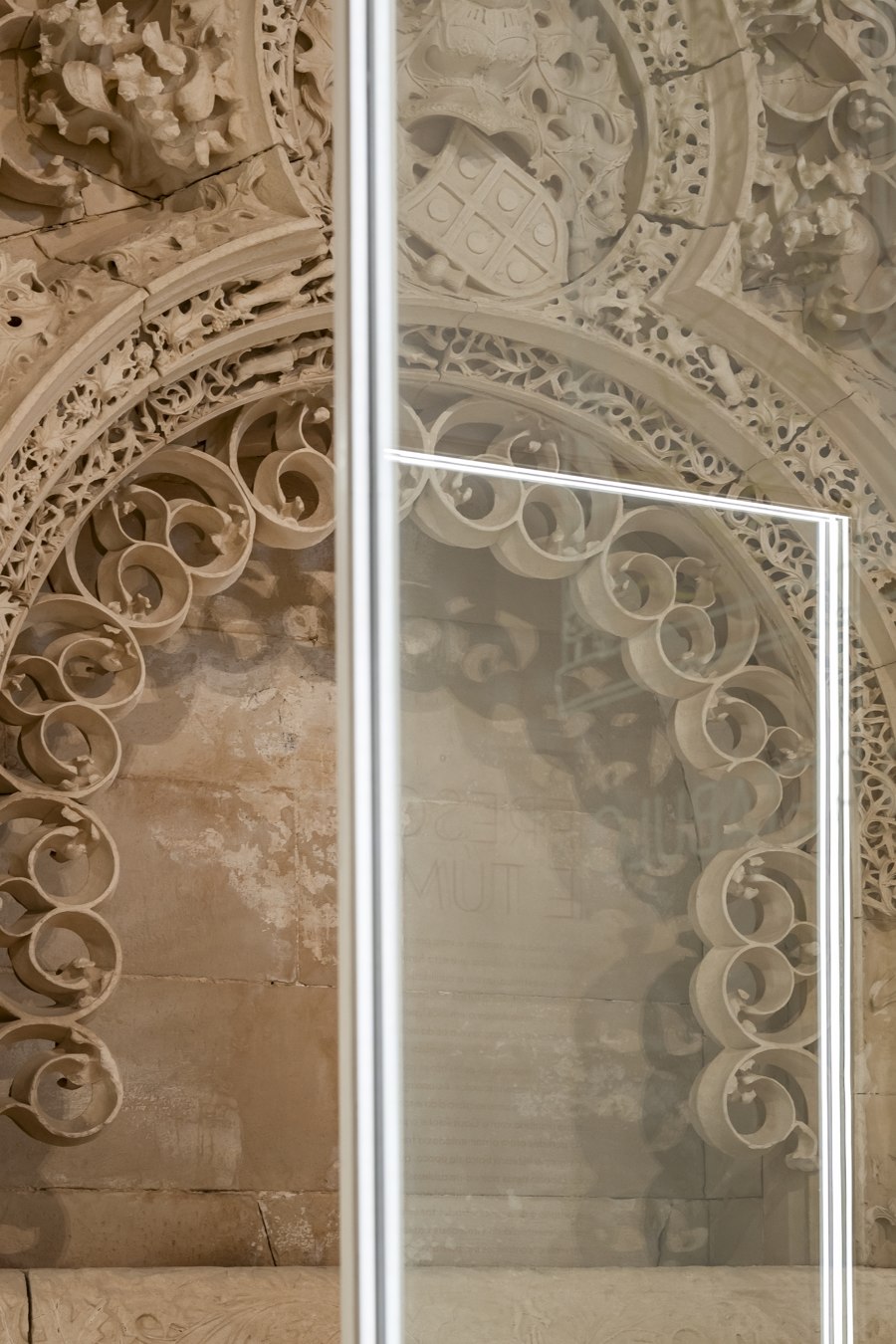The museography and exhibition architecture project of the Panteão dos Almeida, in the Church of Santa Maria do Castelo in Abrantes, Portugal, intends to adapt and refurbish the interior of an old church (a historic building in the city of Abrantes, built in 1215 by D. Afonso II, and later, in 1433, rebuilt by D. Diogo Fernandes de Almeida, one of the central characters of this project), fulfilling the strictness of the restrictions imposed by the entities that oversee the intervention in heritage and that do not allow any alteration to the existing except Painting and maintenance of materials.
Thus, the intervention has to be assumed to be completely reversible and minimalist to avoid competing with the historic grandeur of the existing building.
With that in mind, an intervention with an ethereal and simple appearance was thought of, which could dialogue with the pre-existing, while creating a virtually open and fluid space, capable of exploring numerous visual and conceptual relationships between the proposal and the existing, turning it as well as an interpretive element of the church, while defining the hierarchies of the exhibition design. Creating in that way, an immersive experience for visitors.
With that in mind, the proposal was materialized in the construction of a pine wood platform, resting on an existing clay floor, while being detached from the walls to give the impression of a floor floating in space, as if from a new layer of the history was also allowed to perceive the existing floor, which tells a different story.
The expository architecture explores the sense of the immaterial and the intangible, and its permeability allows the visualization of the entire amplitude of the Church, a kind of augmented reality, layers of information juxtaposed to the existing one.
Challenging the scale of the place, the proposal assumes different dimensions, rhythms and proportions of the exhibition structures, which are simple, ephemeral, transparent and, with little volume and little material, managing to communicate with subtlety alluding to the sacred, a simplicity of constructive logic.
The wooden floor supports the metallic structures of various sizes, with the glazing varying between 5m, 3m and 2m in height. These are embedded 30 cm deep in metal parts, which make the ballast built by wood support the weight of the structure. The various pieces are distributed throughout the museum space, according to the layout that follows the geometry of the building and that takes advantage of verticality (and scale).
The lines of light, which run along the entire museum floor, elevating the space with an energetic and active vibe, and are repeated in the glass frames that support the exhibition's graphic elements, play a central role in the entire project.
In order to encourage exploratory visits, there is also an interactive table and benches for contemplation. The position, the scale between each module, and the multimedia projection space, provide different spatial experiences to involve visitors at various levels, whether in terms of museographic discourse or in terms of understanding what exists.
Design Team:
spaceworkers









































































